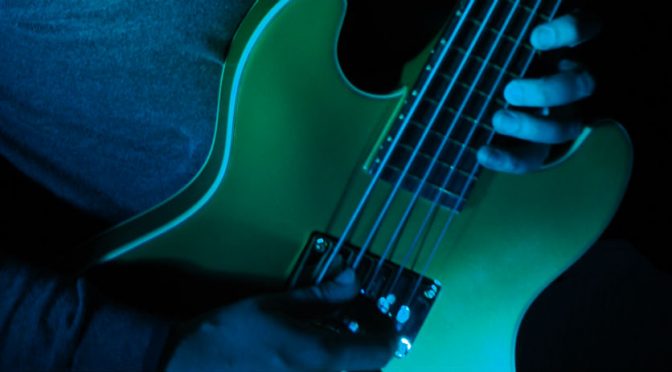Two Hand Tapping Exercise for Bass Guitar – Tapping Triads – Bass Practice Diary – 3rd November 2020
Last week I featured a two-hand tapping bass groove that I wrote on bass guitar. This week I’m starting a series of lessons in which I break down the fundamentals of my tapping techniques. The most basic tapping technique is the ability to perform hammer-ons and pull-offs with both your left and right hand. If you’d like some left hand hammer on and pull off exercises, then check out this video. Today I’m going to focus on tapping with the right-hand index finger.
Tapping Arpeggios
Tapping techniques work particularly well for playing arpeggios. Using both hands to generate notes means that you can play wider intervals very fast. That’s extremely hard to do if you’re fretting with the left-hand and plucking with the right-hand. It’s relatively easy to play the smaller intervals of scales fast, by using conventional plucking techniques. But tapping creates a huge advantage for playing the wider intervals of arpeggios fast.
The most basic arpeggio type is a triad, a three note chord. There are four main types of triad: major, minor, diminished and augmented. This exercise simply goes through each one in a sequence.
The Exercise




The reason that the sequence is in this order is because I’m starting with the smallest intervals (two minor 3rds), which is a diminished arpeggio. And I’m moving up to the largest intervals (two major 3rds) which is the augmented triad. In the video I then play the exercise in reverse order going from largest intervals to smallest.
Should You Use Compression When Tapping?
I touched on the subject of compression very briefly in the video. Dynamic Range Compression is an audio effect that effectively squashes the dynamics in your playing. It makes the loud notes quieter and the quiet notes louder to even out the dynamics and make everything the same level. You can play bass through a compression pedal, there are many on the market. Or you can add compression to a recording of your bass in a DAW like Pro Tools or Logic.
There is an obvious advantage and an obvious disadvantage to using compression when tapping. The advantage is, that if your hammer ons are louder than your pull offs, or your right hand notes are quieter than your left hand notes, then the compression will compensate and even out the sound.
The obvious disadvantage of using compression when you’re playing, is that it will amplify any unwanted noise. Any squeak from a string or rumble from an unmuted open string will be made louder. Personally, I never use compression when I’m playing, but I do sometimes add it to a recording when appropriate. It’s entirely up to the individual whether they use compression or not, but it is common to use compression for tapping techniques.

